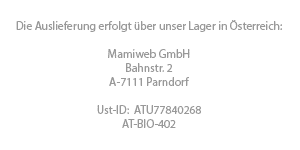
- Effects of Haritaki
- Parasites
Antiparasitic effect of Haritaki
Terminalia Chebula: Parasites
Scientific experiments and studies on the antiparasitic effect of Haritaki.
Protective effect of Terminalia chebula Retz. extract against Aß aggregation and Aß-induced toxicity in Caenorhabditis elegans
Journal of Ethnopharmacology 2021 Mar 25;268:113640. doi: 10.1016/j.jep.2020.113640. Epub 2020 Dec 8.TWE treatment can significantly improve the paralysis of transgenic C.elegans caused by Aß aggregation (up to 14%). The Aß aggregates in transgenic C.elegans are significantly inhibited under TWE exposure (up to 70%). TWE increases the nuclear localization of the key transcription factor DAF-16 and HSF-1, which in turn leads to the expression of downstream Hsp-16.2 protein and exerts its inhibitory effect on Aß aggregation. Meanwhile, paralysis improved has not observed in SKN-1 mutation and/or RNAi C.elegans. Conclusion: Our results indicate that TWE can protect C.elegans against the Aß1-42-induced toxicity, inhibition Aß1-42 aggregation and delaying Aß-induced paralysis. The neuroprotective effect of TWE involves the activation of DAF-16/HSF-1/Hsp-16.2 pathway.
[Link to the scientific study]Efficacy of anthelmintic properties of medicinal plant extracts against Haemonchus contortus
Research in Veterinary Science 2011 Dec;91(3):400-4. doi: 10.1016/j.rvsc.2010.09.018. Epub 2010 Oct 25.The development of anthelmintic resistance has made the search for alternatives to control gastrointestinal nematodes of small ruminants imperative. Among these alternatives are several medicinal plants traditionally used as anthelmintics. This present work evaluated the efficacy of ethyl acetate, acetone, and methanol dried leaf and seed extracts of five medicinal plants were tested in vitro ovicidal and larvicidal activities on Haemonchus contortus. The in vitro assay was based on egg hatch assay (EHA) and larval development assay (LDA), all plant extracts were evaluated at five concentrations 50, 25, 12.5, 6.25 and 3.13 mg/ml. The leaf and seed ethyl acetate, acetone and methanol of Annona squamosa, Eclipta prostrata, Solanum torvum, Terminalia chebula, and Catharanthus roseus extracts were showed complete inhibition (100%) at the maximum concentration tested (50 mg/ml). The overall findings of the present study have shown that our experimental plant extracts contain possible anthelmintic compounds.
[Link to the scientific study]



